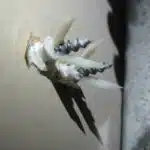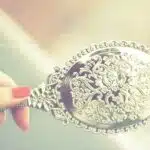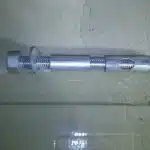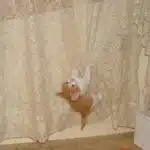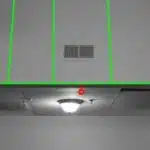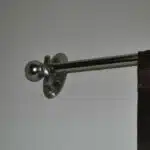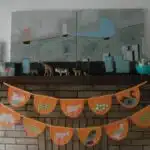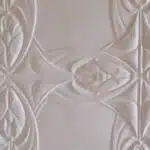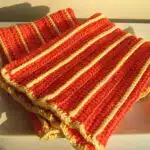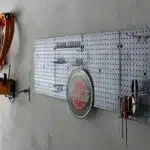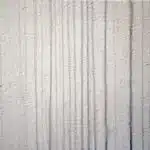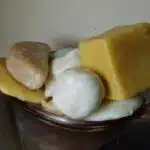Stucco is a popular exterior finish that is widely used in the construction of residential and commercial buildings. It is a durable and attractive material that provides excellent insulation, weatherproofing, and fire resistance. However, hanging things on stucco can be challenging, especially if you don’t know the proper techniques. As a stucco installation expert with years of experience in the construction industry, I have encountered numerous situations where homeowners struggle to hang items on their stucco walls without damaging the surface or causing cracks. In this article, I will share some tips and tricks on how to hang things on stucco safely and effectively.
Whether you want to hang decorations for a special occasion or mount an outdoor light fixture, it is essential to follow proper guidelines when dealing with stucco surfaces. Failure to do so can result in damage to both your property and the surrounding environment. Therefore, it is crucial to understand the characteristics of stucco and choose the appropriate tools and methods for hanging objects on its surface. With my expertise in stucco installation and maintenance, I am confident that this guide will help you navigate through the challenges of hanging things on stucco walls effortlessly while ensuring long-lasting results.
Understanding The Properties Of Stucco
Stucco is a popular building material that is highly durable and resistant to many environmental factors. When installed correctly, stucco can last for many years without requiring significant maintenance. However, it’s important to understand the properties of stucco before attempting to hang any objects on it.
One of the most important things to keep in mind when working with stucco is its durability. Stucco is a very hard material that can withstand a lot of wear and tear. This makes it an excellent choice for building exteriors, but it also means that hanging objects on stucco can be challenging. If you’re not careful, you could damage the stucco or create unsightly holes in your walls.
To avoid these issues, there are several maintenance tips you should follow when working with stucco. First, make sure that the surface is clean and free from any debris or dirt. This will help ensure that your hangers or fasteners adhere properly to the wall. Additionally, you should use only high-quality hangers and fasteners designed specifically for use with stucco.
In order to successfully hang objects on stucco walls, it’s important to choose the right tools for the job. There are several different types of hangers and fasteners available on the market today, each designed for use with different materials and applications. By understanding which tools are best suited for your specific needs, you can ensure a successful installation that won’t damage your walls or compromise their durability over time.
Choosing The Right Tools For Hanging
As we have discussed in the previous section, stucco is a durable and long-lasting material used for both residential and commercial construction. However, when it comes to hanging things on stucco walls, it can be quite challenging without proper knowledge and tools. In this section, we will discuss how to choose the right hardware and take safety precautions while hanging things on stucco.
Choosing hardware is an important aspect when it comes to hanging things on stucco walls. It is recommended to use screws or anchors that are specifically designed for stucco instead of regular screws or nails. The hardware should be able to penetrate through the hard surface of the stucco and hold the weight of the object being hung. It is also important to choose hardware that is suitable for the type of object being hung; heavier objects require stronger hardware.
Safety precautions must also be taken into consideration while hanging things on stucco walls. Always wear gloves and safety goggles when working with power tools or installing hardware into stucco surfaces. Use a ladder that is sturdy and properly positioned on a level surface to avoid accidents. Ensure that the object being hung is not too heavy for the hardware installed, as this can lead to damage or potential injury.
Now that we have covered choosing hardware and taking safety precautions when hanging things on stucco walls, our next section will focus on preparing the surface for hanging.
Preparing The Surface For Hanging
Before hanging anything on stucco, it is important to prepare the surface properly. One of the ways to do this is by applying adhesive. It helps to stabilize the stucco and make it easier to hang items. The adhesive should be applied evenly with a brush or roller, and left to dry for at least 24 hours before attempting to hang anything.
Another option for hanging things on stucco is using wire hangers. These are particularly useful when hanging lightweight items such as picture frames or small mirrors. To install wire hangers, drill two holes into the stucco where you want the item hung, then insert the wire hanger into each hole and secure with screws. Make sure that the screws go deep enough into the stucco so that they hold securely.
Overall, taking time to prepare the surface properly will ensure that items are hung securely and won’t fall off easily. Applying adhesive and using wire hangers are just two of many techniques that can be used for hanging things on stucco surfaces. In the next section, we will discuss how to measure and mark accurately so that you can achieve a professional-looking installation every time.
Measuring And Marking
After properly prepping the surface for hanging, it’s important to ensure measuring accuracy and efficient marking techniques. As an expert in stucco installation, I can attest to the fact that this is crucial for the success of your project. One idiom that comes to mind is “measure twice, cut once.” This emphasizes the importance of taking your time to measure and mark accurately before proceeding with any drilling or hanging.
To achieve this level of precision, there are a few tips I recommend:
- Use a level to make sure your markings are straight and even.
- Double-check your measurements before making any marks on the stucco.
- Consider using painter’s tape or chalk to create temporary markings before drilling.
- Don’t rush! Taking extra time to ensure accuracy will save you time and frustration in the long run.
Now that you have measured and marked accurately, it’s time to move on to drilling into stucco. But before we get into those steps, it’s important to note that different types of stucco may require different drills or bits for proper installation. As an expert in this field, I highly recommend researching what tools will work best for your specific type of stucco before proceeding with any drilling.
Drilling Into Stucco
Drilling into stucco requires careful planning and execution to avoid causing damage to the surface. Stucco is a brittle material that can easily crack if mishandled during installation. Therefore, it’s essential to take precautions when drilling holes into it.
Before drilling into stucco, you need to locate the studs behind the surface. This will give you an idea of where you can safely drill without damaging the stucco. Once you’ve located the studs, use a stud-finder or a hammer to tap gently on the wall until you hear a solid sound. Mark this spot with a pencil or tape before proceeding with drilling.
When drilling into stucco, be sure to use a masonry drill bit that’s specifically designed for this purpose. Make sure that the drill bit is sharp and in good condition before starting as a dull bit can cause cracks or breakage in the stucco. When drilling, apply gentle pressure and avoid using excessive force as this can easily damage the surface. If you encounter resistance while drilling, pull out the bit and clear any debris before resuming. After drilling, fill holes with caulking or patching compound designed for stucco repair to avoid cracks.
Transition sentence: Now that we’ve discussed how to drill into stucco without causing damage, let’s move on to using anchors and screws for hanging objects on your stucco surface.
Using Anchors And Screws
Drilling into stucco is not the only way to hang things on it. There are alternative methods that can be used, such as using adhesive hooks. These hooks come in various sizes and strengths, and can hold a surprising amount of weight.
Before using adhesive hooks, it’s important to clean the area where they will be placed thoroughly with rubbing alcohol or a similar solution. This will ensure that the hooks adhere properly to the stucco surface. Once the area is clean and dry, simply peel off the backing from the hook and press it firmly onto the stucco.
Alternative methods for hanging on stucco include using suction cups or wire hangers with adhesive strips. These methods can also work well, depending on the weight of what is being hung and how securely it needs to be fastened to the wall. With these alternatives in mind, there are plenty of options for safely hanging items on stucco without drilling into it.
Now that we have covered some alternative methods for hanging things on stucco, let’s move on to discussing how to hang pictures and frames specifically.
Hanging Pictures And Frames
Hanging Pictures and Frames on Stucco
Hanging pictures and frames on stucco walls can be a challenging task, but with the right techniques, it can be done easily. Before starting the hanging process, one should consider the weight of the picture or frame. Lightweight items require different hanging techniques compared to heavy ones. For instance, a lightweight picture or frame can be hung using adhesive strips or hooks while a heavy item requires special hardware and anchors.
To hang a lightweight picture or frame, adhesive strips or hooks are perfect for stucco walls. These adhesives come in various sizes and shapes that can support up to 16 lbs of weight. However, before sticking them to the wall surface, make sure that the wall is clean and dry. It’s also essential to follow the manufacturer’s instructions for proper adhesion.
For heavier decorative arrangements such as mirrors or large frames, use sturdy hardware such as screws and anchors that are designed for stucco installation. The table below shows some of the best-hanging techniques for different weights of decorative arrangements.
| Weight | Hardware | Method |
|---|---|---|
| Up to 30 lbs | Toggle bolts | Insert bolts into pre-drilled holes then tighten |
| 30 – 50 lbs | Molly bolts | Pre-drill hole then insert molly bolt |
| Over 50 lbs | Expansion anchors | Drill hole then insert anchor |
The table above is an excellent guide when deciding what type of hardware is appropriate for your decorative arrangement. By following these steps, you’ll have beautiful decorative arrangements hanging securely on your stucco walls in no time.
Transition: Now that you’ve learned how to hang pictures and frames on stucco walls let’s move onto mounting light fixtures without causing damage to your wall surface.
Mounting Light Fixtures
Hanging pictures and frames on stucco can be a tricky task, but it is not impossible. It requires careful planning and the right tools to ensure that your artwork stays securely in place. However, when it comes to mounting light fixtures on stucco, there are additional considerations that need to be taken into account.
Types of fixtures play an important role in the installation process. Different types of fixtures require different mounting methods depending on their weight and size. For example, if you have a heavy chandelier or pendant light fixture, you will need to use a sturdy mount that can support its weight. Alternatively, smaller fixtures like wall sconces can be mounted using screws or adhesive strips.
Wiring considerations are also crucial when installing light fixtures on stucco. It is important to ensure that the wiring is done safely and correctly to avoid any potential hazards such as electrical fires or shocks. If you are unsure about how to wire your light fixture properly, it is best to consult with a professional electrician who can guide you through the process.
Moving onto outdoor decorations: installing outdoor decorations on stucco requires similar techniques as hanging pictures and frames but with added considerations for weather resistance and durability. As with any project involving stucco walls, it’s important to choose the right materials and tools for the job at hand. In the next section, we will explore some tips for installing outdoor decorations on stucco walls so that they remain secure and protected from harsh weather conditions.
Installing Outdoor Decorations
When it comes to installing outdoor decorations on stucco, there are a few things to keep in mind. First, it is important to select the right materials for the job. Stucco can be a delicate surface, so it is best to use hardware that is designed specifically for stucco installation. There are many different options available, including specialty screws and anchors that will provide a secure hold without damaging the stucco.
Once you have your materials selected, it’s time to get creative with your designs. Outdoor decorations can add an extra touch of style and personality to any home or business. Whether you are looking for something simple like a flag holder or address plaque, or something more elaborate like a large metal wall sculpture or fountain, there are countless options available.
With the right materials and creative designs, installing outdoor decorations on stucco can be a fun and rewarding project. Whether you are looking to spruce up your own home or add some flair to a commercial property, there is no shortage of options available. So why wait? Get started today and transform your outdoor space into something truly special.
As we move onto hanging planters and baskets on stucco surfaces, it is important to keep in mind the weight capacity of your hardware and the size of your planter. Choosing the best materials for this task will ensure that your planters stay securely attached without causing damage to your stucco surface.
Hanging Planters And Baskets
After successfully installing outdoor decorations, it’s time to move onto the next task of hanging planters and baskets on stucco walls. One example of this is when a homeowner wants to add some greenery to their front porch but doesn’t have enough space for potted plants or flower beds. Hanging planters and baskets are a great solution as they can add color and life to any dull space.
Choosing the right plants for your hanging baskets or planters is crucial for their survival. It’s important to select plants that thrive in your specific climate and sunlight conditions. Some popular options include petunias, impatiens, ferns, and ivy. Additionally, make sure to choose a planter with adequate drainage holes and consider using a high-quality potting mix.
Watering tips are also essential when it comes to maintaining healthy plants in hanging containers. These types of planters tend to dry out quickly due to their exposure to more sun and wind than traditional garden beds. To prevent this, water your plants at least once a day during hot weather or if the soil feels dry to the touch. Additionally, fertilize your plants every few weeks with a balanced fertilizer for optimal growth.
Transitioning into hanging mirrors on stucco walls requires careful consideration as well. While stucco walls are durable and long-lasting, they can be difficult to drill into without causing damage. One option is using an adhesive mounting tape specifically designed for heavy items such as mirrors. Another option is utilizing masonry screws with plastic anchors for added stability. By carefully selecting the appropriate materials and installation methods, homeowners can confidently hang mirrors on their stucco walls without fear of causing harm or damage.
Hanging Mirrors
Hanging mirrors on stucco walls can be a challenging task, especially for those who are not familiar with the process. Proper mirror placement is crucial for both functionality and aesthetics. Before proceeding with the installation, it is important to determine the appropriate location of the mirror. It should be placed at a height that is suitable for all users and provide an unobstructed view.
Mirror size also plays an important role in determining its placement on stucco walls. Large mirrors should be installed using sturdy anchors that can support their weight. Smaller mirrors, on the other hand, may only require adhesive hooks or screws with anchors. Before drilling holes into the stucco wall, it is important to ensure that there are no electrical wires or plumbing behind it.
To hang a mirror on stucco walls, follow these steps:
- Determine the appropriate height and location of the mirror.
- Choose the appropriate anchor or hook based on the size and weight of the mirror.
- Use a drill to make holes in the stucco wall and insert anchors or hooks accordingly.
Hanging mirrors can add style and functionality to any room, but proper installation is key to prevent damage to both the wall and mirror. By following these steps and taking necessary precautions, you can successfully hang a mirror on your stucco wall without any issues.
Transition: Now that you have successfully hung your mirrors, let’s move on to hanging shelves and cabinets which will require different techniques for proper installation.
Hanging Shelves And Cabinets
After successfully hanging your mirrors, it’s time to move onto more advanced stucco installation projects, such as shelves and cabinets. Before diving in, it’s important to consider the weight capacity of the stucco wall and adjust heights accordingly. This will ensure that your shelves or cabinets are securely fastened without causing any damage to the wall.
When hanging shelves or cabinets on stucco walls, it’s crucial to use the proper tools and hardware for optimal stability. Anchors that are specifically designed for stucco installation should be used instead of generic ones. It’s also important to evenly distribute weight across multiple anchors for added support. By taking these precautions, you can prevent any potential damage to your stucco wall and ensure that your shelves or cabinets stay put.
If you do encounter any issues with removing your shelves or cabinets from a stucco wall, there are steps you can take to repair any damage caused by anchors or screws. Using a patching compound specifically designed for stucco walls is recommended for filling in holes left behind by hardware. After applying the compound and allowing it to dry according to instructions, sand it down until it is flush with the wall surface. With these tips in mind, you can confidently hang shelves and cabinets on your stucco walls knowing that they will stay firmly in place without causing any damage.
Removing And Repairing Damage
When attempting to hang something on stucco walls, it is important to be mindful of the potential for damage. In some cases, a small hole or crack may appear where the object was hung. If this is the case, it is important to take steps to repair the damage as soon as possible in order to prevent further issues.
To repair cracks in stucco, begin by cleaning the area around the crack with a wire brush or scraper. Next, mix up a batch of stucco patching compound according to the manufacturer’s instructions. Apply the compound to the cracked area, using a trowel or putty knife to smooth it out. Allow the compound to dry completely before painting over it if necessary.
If you have holes in your stucco walls from previous hanging attempts, filling them is relatively simple. Begin by cleaning any dirt or debris from around the hole with a wire brush or scraper. Next, fill the hole with spackling compound and smooth it out with a putty knife. Allow it to dry completely before sanding it down and painting over it if necessary. With these simple steps, you can easily repair any damage caused by hanging objects on your stucco walls and maintain their appearance for years to come.
Transition: While repairing cracks and filling holes in your stucco walls is important for preserving their appearance and integrity, there are also several maintenance steps that can be taken to ensure their longevity and durability over time.
Maintaining Your Stucco Walls
As the old adage goes, prevention is better than cure. This statement holds true when it comes to stucco maintenance. By taking preventive measures, you can save yourself from costly repairs in the future. Regular inspections of your stucco walls are crucial to ensure that they remain in good condition. Inspect them at least once a year, and after any extreme weather events. Look for cracks, chips, or any signs of damage.
If you notice any damage on your stucco walls, repairing it as soon as possible is essential. Delaying repairs can lead to more extensive damage and costly repairs down the road. Small cracks can be repaired with a stucco repair kit available at most hardware stores. If the damage is more severe, it’s best to call in a professional contractor who specializes in stucco repair.
In summary, regular inspections and timely repairs are key to maintaining your stucco walls’ integrity and avoiding costly repairs down the line. In the next section, we’ll discuss common issues homeowners face with their stucco walls and how to troubleshoot them effectively.
Troubleshooting Common Issues
When working with stucco, it’s important to understand that common mistakes can occur during the installation process that can make it difficult to hang things securely. One of the most common mistakes is not properly preparing the surface before hanging anything. This can lead to weak adhesion and a failure to keep items in place. To avoid this mistake, make sure you clean the surface thoroughly and allow it to dry completely before attempting to hang anything.
Another common issue when hanging things on stucco is using the wrong type of hardware. It’s important to use hardware specifically designed for use on stucco, as other types of fasteners may not hold up over time or may even damage the surface of the stucco itself. Best practices include using screws or anchors made from materials such as zinc or nylon, which are both strong and durable enough to support a variety of objects.
Finally, it’s important to be patient when installing any hardware onto a stucco surface. Rushing through the installation process can lead to mistakes and ultimately cause damage to your wall or item being hung. Take your time and follow best practices for cleaning, choosing hardware, and installation techniques that will ensure a secure hold on your items for years to come.
Conclusion
Stucco walls can be a challenge when it comes to hanging things, but with the right tools and techniques, it is possible. Understanding the properties of stucco is essential before attempting to hang anything on it. Choosing the appropriate tools, preparing the surface, measuring and marking accurately are all crucial steps to ensure successful installation.
When drilling into stucco, use a masonry bit and drill at a low speed to prevent cracking or chipping. Hanging shelves and cabinets require additional support, such as using toggle bolts or anchors. In case of damage, remove the item carefully and repair any holes or cracks immediately.
One example of a common issue in hanging objects on stucco walls is the difficulty of finding secure anchor points. In this situation, try using adhesive strips designed for heavy items instead of traditional hardware. It is always better to seek professional help if you are unsure about any step in the process.
As a stucco installation expert, I recommend following these steps carefully for optimal results when hanging objects on stucco walls. With proper preparation and attention to detail, you can achieve a beautiful display without damaging your walls. Remember that maintenance is also important in preserving the integrity of your stucco walls.
Image Credits
- “Moth on Stucco” by FotoGrazio (featured)




